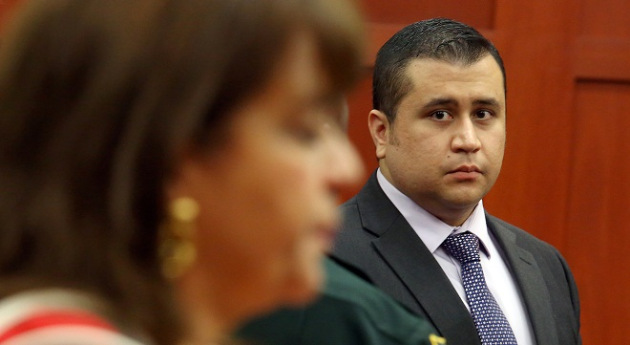We’re taught from an early age that we should “do unto others.” To help combat terrorism, we are told that if we “see something, say something.” We have respect for those who volunteer their time at churches, hospitals, rural firehouses and neighborhood watch programs.
Videos By Rare
We can all probably agree it is a good thing to be involved. It is a bad thing to get overly involved.
I hope all volunteers are watching what’s happening to George Zimmerman in a Sanford, Fla., courtroom. He’s on trial for second-degree murder in the shooting death of a 17-year-old African-American named Trayvon Martin. If convicted, this onetime captain of his neighborhood watch faces 25 years to life in prison. I’m sure in his mind Zimmerman thought of himself as a good Samaritan for helping keep his neighborhood safe.
After a rash of burglaries at his condo complex, Zimmerman — who is a multiracial Hispanic — was automatically on guard last February as he drove to the grocery store. He spotted young stranger — Trayvon Martin — meandering through the complex with the hood of his sweatshirt up as a shield against the evening’s rain. Zimmerman, 29, called in a suspicious-person report to police and got out of his vehicle to investigate. The older man had been taking criminal-justice courses to advance his goal of becoming a law-enforcement officer and almost always carried a registered handgun in a holster on his hip.
We may never learn the whole story of what happened next because only Zimmerman survived that night. Did Zimmerman vengefully pursue Martin? Was it racially motivated, as many seem to think? Or did it happen the way the defendant said — the teenager threw the first punch in a fight that caused the watch captain to fear for his life? A single fatal gunshot left us with only one version of the story.
I know this may be an unpopular position to take, but for the sake of discussion let’s say Zimmerman was acting in good faith that night. Just hear me out here. There had been eight robberies at the complex in the prior 15 months. In fact, just three weeks before the fatal shooting, neighbor Frank Taaffe says Zimmerman saved his home from being burglarized.
“My house was being robbed, and George on his nightly rounds watched this burglary in progress, called Sanford P.D., waited for them and helped ensure that nothing bad happened to my house,” Taaffe told CNN.
So, maybe on the night of the shooting Zimmerman was honestly acting as the protector of the complex, a role he had become accustomed to. No one I have run across has dared to publicly mention this possibility. Seems we have become much more suited to immediately condemn, finding a dark, hidden meaning behind these tragic cases — “He was hunting for a black kid!” or, “He’s a wanna-be cop strutting around with a gun ready to shoot!” To suggest the tragedy might have stemmed from something much more benign invites complaints from those who see racism or abuse of power in every circumstance.
Could what happened the night of Feb. 26, 2012, in Sanford have been borne of a sad calamity of circumstance? No one is saying Zimmerman set out to murder when he went to the grocery store that night. No one is saying the teenager was out looking for a fight. You can’t call the shooting an accident, of course, but might it have been a simple case of two macho males locking eyes — each believing they had to fight for their own honor and safety? A fight that went tragically wrong?
According to witness John Good, who was on his nearby balcony, Zimmerman looked up at him and breathlessly said he thought his life had been in danger. Another neighbor, Jonathan Manalo, was also at the scene almost immediately and took the bloodied photos of Zimmerman we’ve all seen. He testified that Zimmerman told him, “This guy was beating me up, and so I had to shoot him.” In legal terms such an “excited utterance” carries a lot of weight. What someone says in the heat of the moment is considered important for the jury to hear.
Zimmerman critics scoffed at that testimony claiming that since the watch captain was a student of criminal justice — and had earned A’s in class, according to one of his former professors — he instantaneously realized he had to claim self-defense to ward off murder charges. It was all a made-up story, they say, designed by Zimmerman to protect himself.
Who can honestly say what was in the mind of this man — or in the mind of the teenager — after they suddenly confronted each other and were forced to make split-second decisions? But after I heard a medical examiner testify that Trayvon Martin had bruises on his knuckles consistent with having hit someone, I looked again at the photographs of Zimmerman’s bloody face and head. I wondered how badly beaten must someone be before they are allowed to defend themselves by any means available?
The raw emotions that have percolated around this trial serve to underscore that once the flames of a super-emotional story like this are fanned by 24/7 media coverage and so-called “community activists,” it is easy to lose sight of reality. Taking sides in blind haste is a sure-fire way to help truth get lost. Maybe the truth is that there is blame to be laid at the feet of both these men for the fight that broke out that night. One thing is clear — it was a terrible catastrophe for all involved.
© CREATORS.COM

